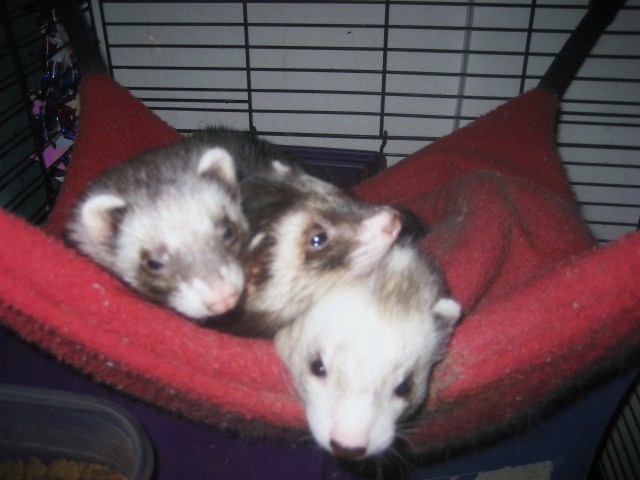 |
| Welcome to the Joyful Ferret info page! |
Brighter Way  View our new Photo Gallery! NEW!!! Check out the slide show from the FERRET FROLIC From Wikipedia: The ferret is a domestic mammal of the type Mustela putorius furo. Ferrets are sexually dimorphic predators with males being substantially larger than females. They typically have brown, black, white, or mixed fur, have an average length of approximately 20 inches (51 cm) including a 5 inch (13 cm) tail, weigh about 1.5 to 4 pounds (0.7 to 2 kg), and have a natural lifespan of 7 to 10 years.  Does this guy look dangerous to you? Several other small, elongated carnivorous mammals belonging to the family Mustelidae (weasels) also have the word "ferret" in their common names, including an endangered species, the Black-footed Ferret. The ferret is a very close relative of the polecat, but it is as yet unclear whether it is a domesticated form of the European Polecat, the Steppe Polecat, or some hybrid of the two. The history of the ferret's domestication is uncertain, like that of most other domestic animals. It is very likely that ferrets have been domesticated for at least 2,500 years. They are still used for hunting rabbits in some parts of the world today, but increasingly they are being kept simply as pets. Being so closely related to polecats, ferrets are quite easily able to hybridize with them, and this has occasionally resulted in feral colonies of ferret polecat hybrids that have been perceived to have caused damage to native fauna, perhaps most notably in New Zealand. As a result, some parts of the world have imposed restrictions on the keeping of ferrets. |
 |
| The ferret has a wild family member, the Black Footed Ferret. This info is from the American Ferret Association: The Black-footed Ferret is the most endangered land mammal in North American.
The BFF was declared extinct in 1979. A live BFF was seen in October 1981 and so began the long, difficult endeavor to save this species from extinction. Read the incredible BFF timeline here: In 2008, the conservation efforts ran into trouble when sylvatic plague was discovered in the prairie dog colonies in South Dakota. This area is home to almost half of the Black-footed ferrets in the U.S. This disease is deadly to both the prairie dogs and the BFFs. The effort to combat the plague is costly and time-consuming. Funding is needed to ensure all efforts can be made so that this program is a success. |